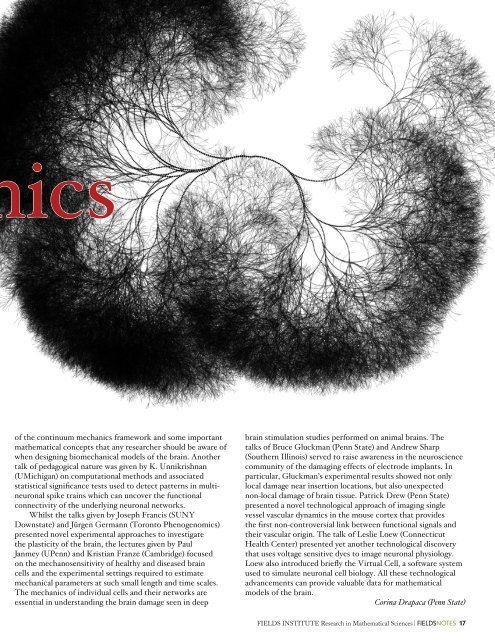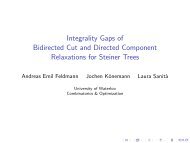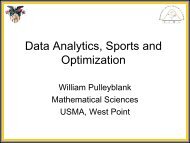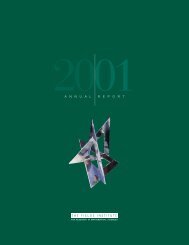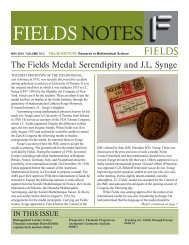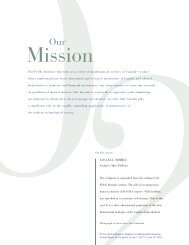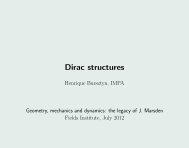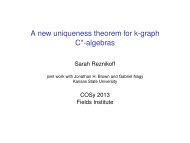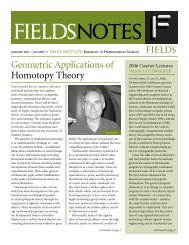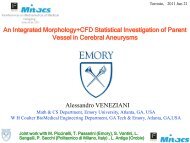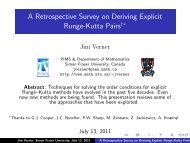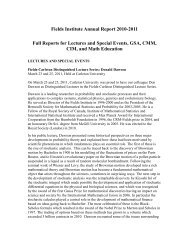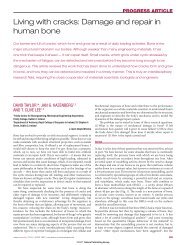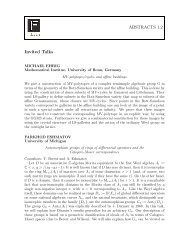SCIENTIFIC ACTIVITIES - Fields Institute - University of Toronto
SCIENTIFIC ACTIVITIES - Fields Institute - University of Toronto
SCIENTIFIC ACTIVITIES - Fields Institute - University of Toronto
Create successful ePaper yourself
Turn your PDF publications into a flip-book with our unique Google optimized e-Paper software.
ics<br />
<strong>of</strong> the continuum mechanics framework and some important<br />
mathematical concepts that any researcher should be aware <strong>of</strong><br />
when designing biomechanical models <strong>of</strong> the brain. Another<br />
talk <strong>of</strong> pedagogical nature was given by K. Unnikrishnan<br />
(UMichigan) on computational methods and associated<br />
statistical significance tests used to detect patterns in multineuronal<br />
spike trains which can uncover the functional<br />
connectivity <strong>of</strong> the underlying neuronal networks.<br />
Whilst the talks given by Joseph Francis (SUNY<br />
Downstate) and Jürgen Germann (<strong>Toronto</strong> Phenogenomics)<br />
presented novel experimental approaches to investigate<br />
the plasticity <strong>of</strong> the brain, the lectures given by Paul<br />
Janmey (UPenn) and Kristian Franze (Cambridge) focused<br />
on the mechanosensitivity <strong>of</strong> healthy and diseased brain<br />
cells and the experimental settings required to estimate<br />
mechanical parameters at such small length and time scales.<br />
The mechanics <strong>of</strong> individual cells and their networks are<br />
essential in understanding the brain damage seen in deep<br />
brain stimulation studies performed on animal brains. The<br />
talks <strong>of</strong> Bruce Gluckman (Penn State) and Andrew Sharp<br />
(Southern Illinois) served to raise awareness in the neuroscience<br />
community <strong>of</strong> the damaging effects <strong>of</strong> electrode implants. In<br />
particular, Gluckman’s experimental results showed not only<br />
local damage near insertion locations, but also unexpected<br />
non-local damage <strong>of</strong> brain tissue. Patrick Drew (Penn State)<br />
presented a novel technological approach <strong>of</strong> imaging single<br />
vessel vascular dynamics in the mouse cortex that provides<br />
the first non-controversial link between functional signals and<br />
their vascular origin. The talk <strong>of</strong> Leslie Loew (Connecticut<br />
Health Center) presented yet another technological discovery<br />
that uses voltage sensitive dyes to image neuronal physiology.<br />
Loew also introduced briefly the Virtual Cell, a s<strong>of</strong>tware system<br />
used to simulate neuronal cell biology. All these technological<br />
advancements can provide valuable data for mathematical<br />
models <strong>of</strong> the brain.<br />
Corina Drapaca (Penn State)<br />
FIELDS INSTITUTE Research in Mathematical Sciences | FIELDSNOTES 17


